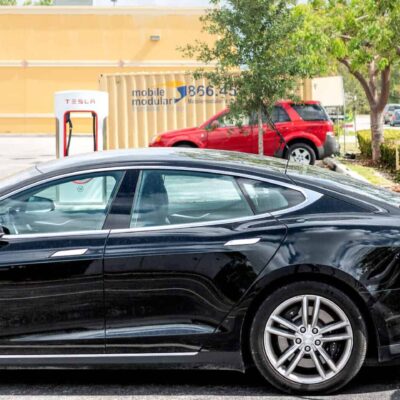As part of WIT’s continued commitment to staying ahead of the curve when it comes to litigation trends in evolving areas of technology, we’ve been conducting in-depth research across our key focus areas to identify patterns in past disputes and potential areas of future conflict. Our latest deep dive centers on the automotive sector. By examining litigation data from the past decade, we set out to uncover which original equipment suppliers (OEMs), geographic regions, law firms, and attorneys have been shaping the legal landscape and driving litigation in the auto space. Let’s take a look at some of our findings.
Q: Which OEMs and tier suppliers are experiencing the highest volume of litigation, and how have the types and frequency of claims against them evolved over the past five years?
A: Historically, litigation has clustered around major global automakers and suppliers from the U.S., Japan, and Europe.
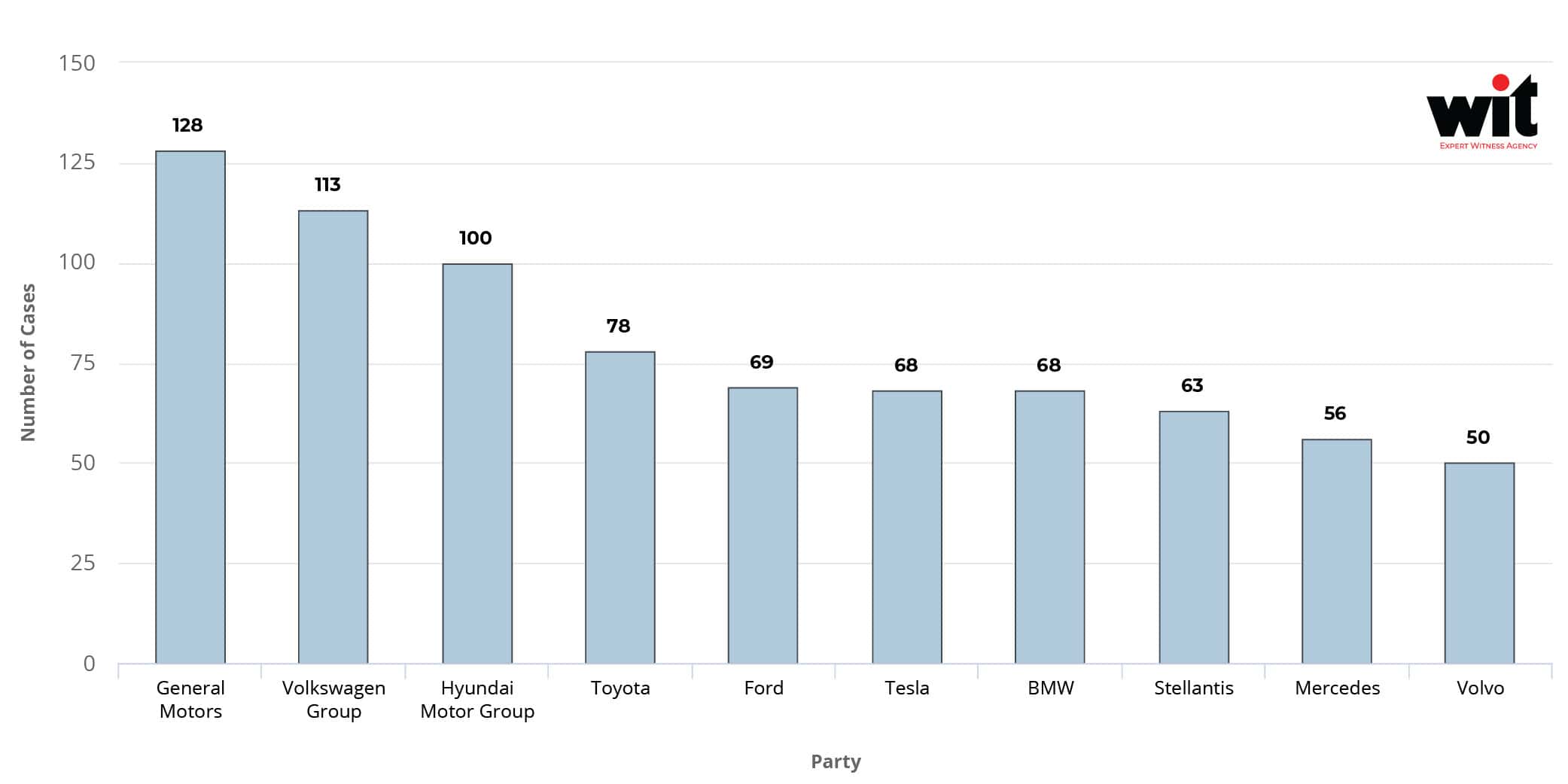
While the U.S. Big 3 have seen a modest decline in filings in recent years, Japanese manufacturers like Toyota and Honda remain frequent participants in litigation. Many of these cases stem from disputes over intellectual property, contracts, and trade secrets. In particular, Toyota has been at the center of a significant volume of litigation, reflecting the complex interplay between global supply chains and proprietary technologies.
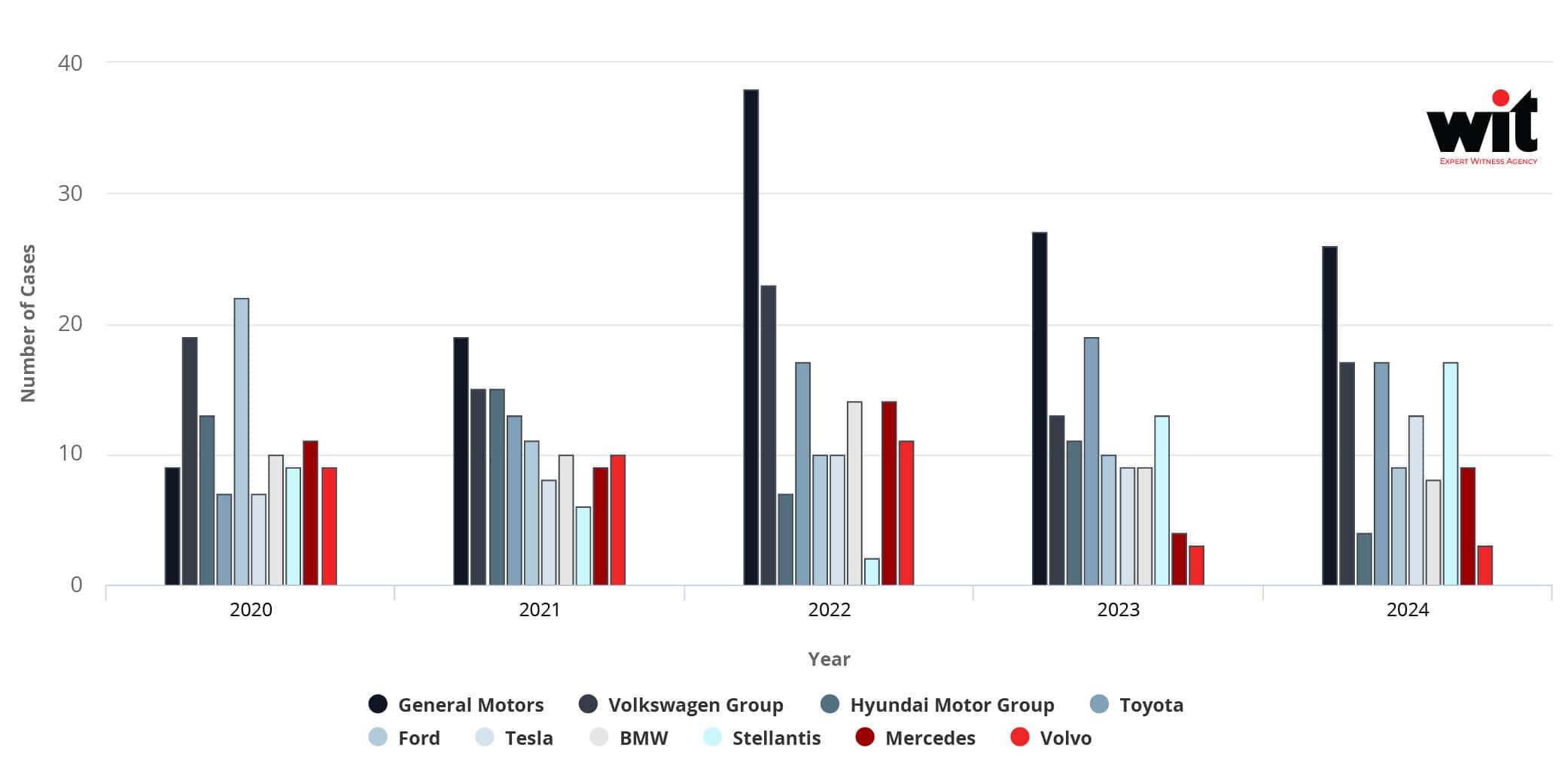
While contract disputes continue to dominate, the data reveals a growing presence of intellectual property claims, particularly those involving design patents and trademarks. This trend reflects the increasing integration of software, sensor systems, and proprietary electronics into modern vehicles. Suppliers—many of whom operate internationally—are also being pulled into disputes, especially when new vehicle components or platforms are involved.
Q. How has the distribution of automotive litigation by case type (e.g., product liability, intellectual property, antitrust, environmental, and class actions) shifted over time, and what emerging trends should litigators anticipate?
A. Contract and patent litigation continue to dominate the automotive legal landscape, with 768 and 593 total cases respectively over the period analyzed. However, the sector is shifting on account of an ongoing rise in trademark disputes. Between 2021 and 2024, trademark cases surged from just 13 to 114— a nearly 777% increase in just 3 years. This shift suggests rising concern among OEMs and suppliers about brand identity, especially as new players enter the EV space and compete in digital sales channels.
Although they remain less frequent, antitrust, environmental, and class action claims have gained traction. These cases reflect growing regulatory and societal scrutiny over emissions, market concentration, and consumer protection. The emergence of litigation around cybersecurity, sustainability claims, and connected vehicle data further points to an increasingly complex web of legal risk.
In the following graph, you will see the types of cases filed each year.
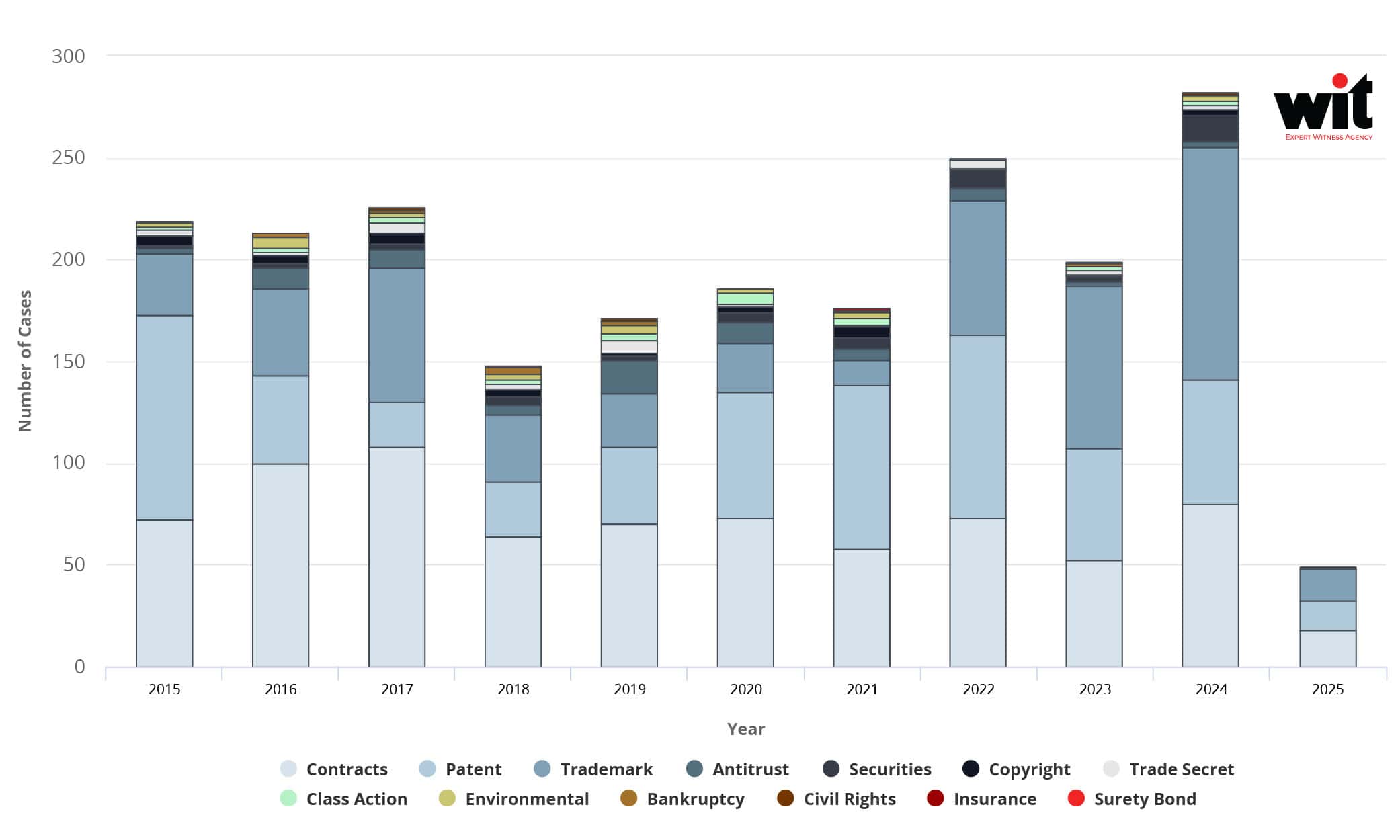
Q. Which law firms and attorneys are handling the most significant and precedent-setting cases in the automotive sector?
A. Certain firms have established themselves as go-to players in high-stakes automotive litigation. Greer, Burns & Crain stands out on account of their high amount of litigation activity, which can be attributed to its ongoing work with General Motors. Attorneys like Amy Crout Ziegler, Justin Gaudio, and Lucas Peterson have become fixtures in this litigation space, often securing favorable judgments in IP cases.
Other major players include Quinn Emanuel, DLA Piper, Hogan Lovells, Finnegan Henderson, and Fish & Richardson. Their presence in multiple years across varied jurisdictions indicates a sustained focus on precedent-setting disputes involving complex technologies, regulatory challenges, and cross-border claims. These firms often bring a combination of IP, regulatory, and automotive-specific expertise to bear, reflecting the industry’s need for highly specialized counsel.

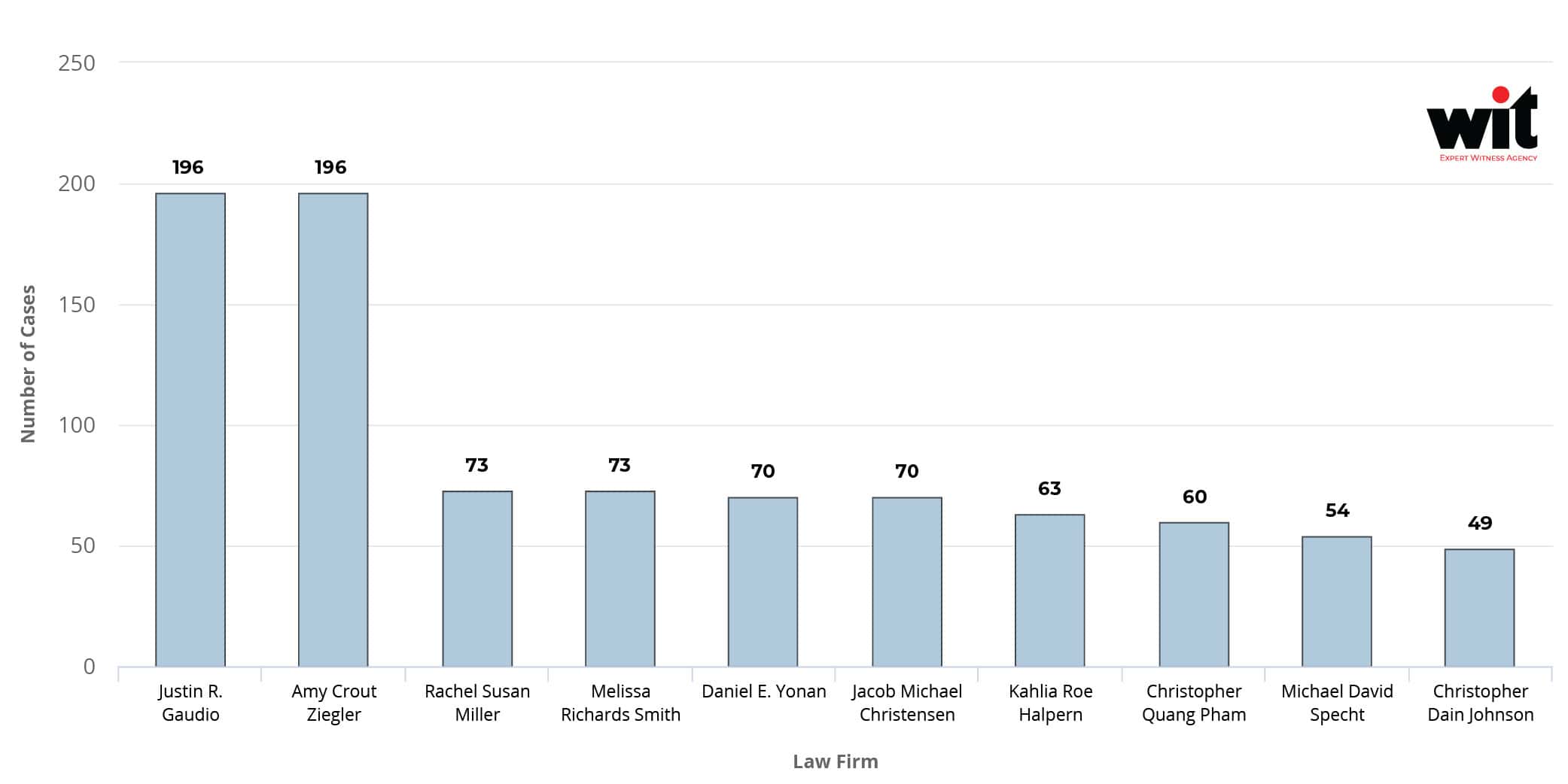
Q. Which law firms and attorneys are most active in representing plaintiffs and defendants in major automotive litigation matters?
A. The automotive litigation landscape includes a multitude of firms and attorneys who appear repeatedly on both sides of the courtroom. On the plaintiff side, Greer, Burns & Crain dominate the field, particularly in IP matters. Attorneys including Amy Crout Ziegler, Justin Gaudio, and Lucas Peterson appear frequently, with over 50 case appearances each. These cases often involve high-volume trademark enforcement actions on behalf of major OEMs, notably Toyota, and many result in default judgments in favor of the plaintiff, reflecting the firm’s strategic use of litigation to combat counterfeiting and IP infringement.
On the defense side, a wider variety of firms surface, many of which specialize in complex product liability, antitrust, or patent disputes. Firms like DLA Piper, Hogan Lovells, and Finnegan Henderson often represent defendants in high-stakes matters involving new technologies, safety-related class actions, or emerging environmental claims. Attorneys such as Melissa Richards Smith (Gillam & Smith), Paul Steadman (DLA Piper), and John Sullivan (Hogan Lovells) appear across multiple years and in varied forums, often advocating for those in disputes that involve novel legal theories or regulatory issues.
The following graph shows the most active firms on the plaintiff side, followed by the most active firms on the defendant side.
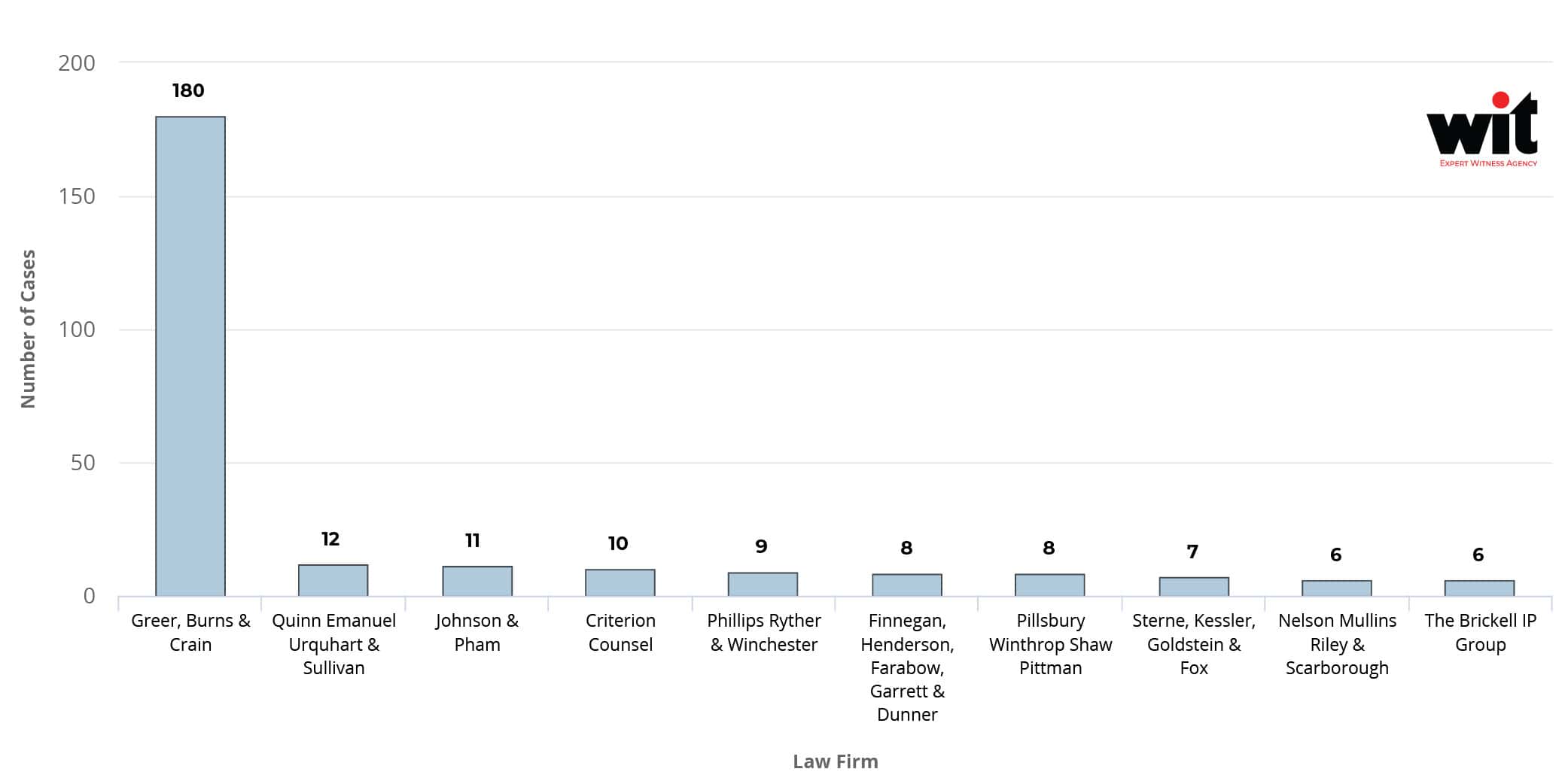
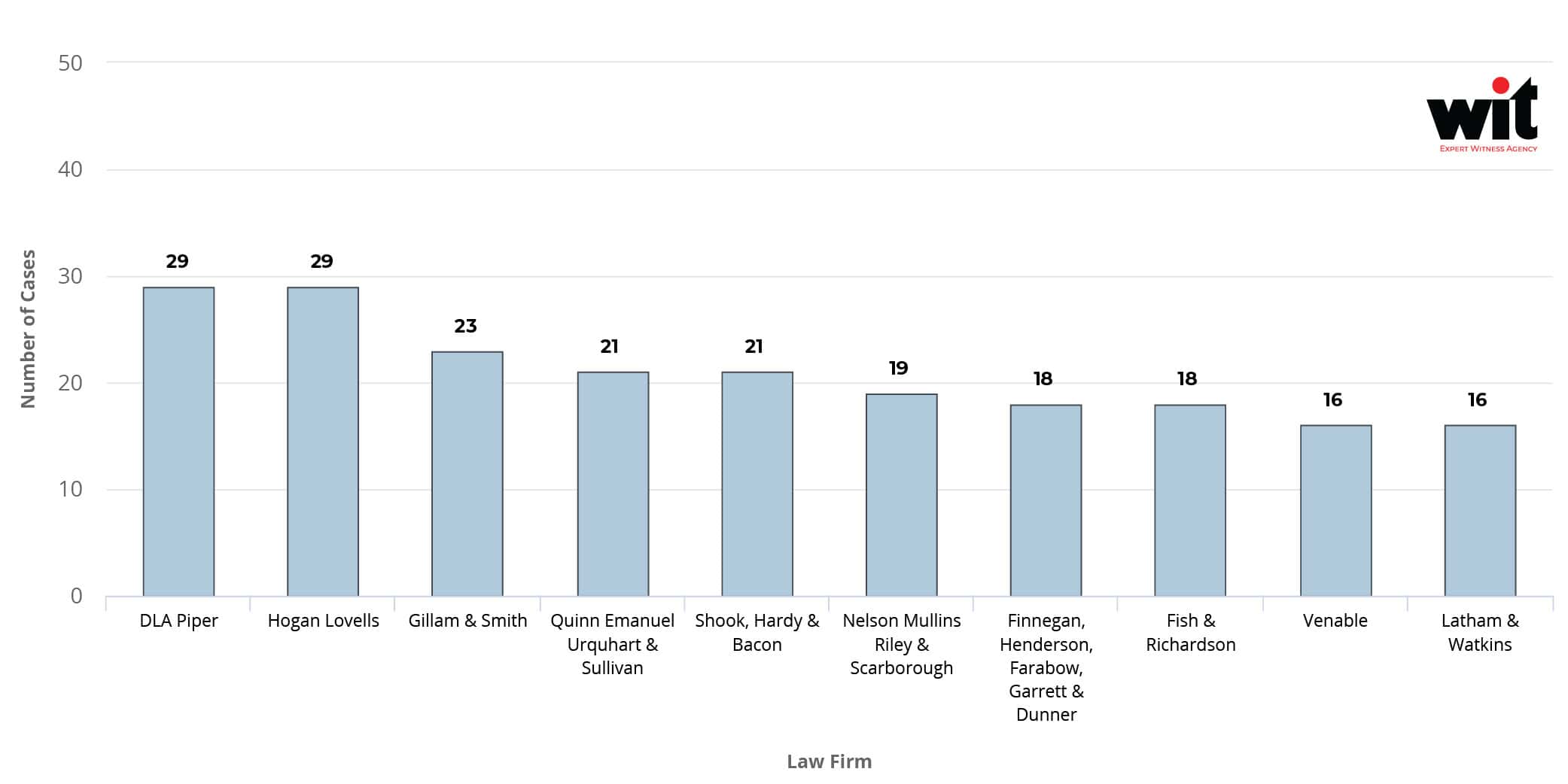
Q. How does litigation involving electric vehicle (EV) companies compare to that of traditional OEMs in terms of volume, legal issues, and regulatory challenges?
A. Electric vehicle manufacturers are not just innovating at a rapid pace, they’re also facing a growing volume of legal disputes. From 2016 through 2024, litigation involving EV companies saw positive year-over-year growth in seven out of ten years. In contrast, the U.S. Big 3 automakers experienced a decline in litigation in seven of those same years, including a significant 10.9% drop in 2023.
Regionally, Europe and the U.S. show strong upward momentum in EV-related disputes, while Japan’s OEMs continue to be active, particularly as they pivot to hybrid and battery technologies. The nature of these cases skews heavily toward regulatory and IP issues, ranging from battery development and energy infrastructure to autonomous driving systems and software interoperability.
Traditional OEMs are still involved in significant litigation, but their disputes are increasingly centered around supplier relationships, software integration, and trade secrets tied to new product lines. As EV companies grow their market share and technical capabilities, they are also becoming key participants in litigation over everything from component design to federal compliance.
Below, you will see a graph illustrating the number of cases by region over a nine-year period.
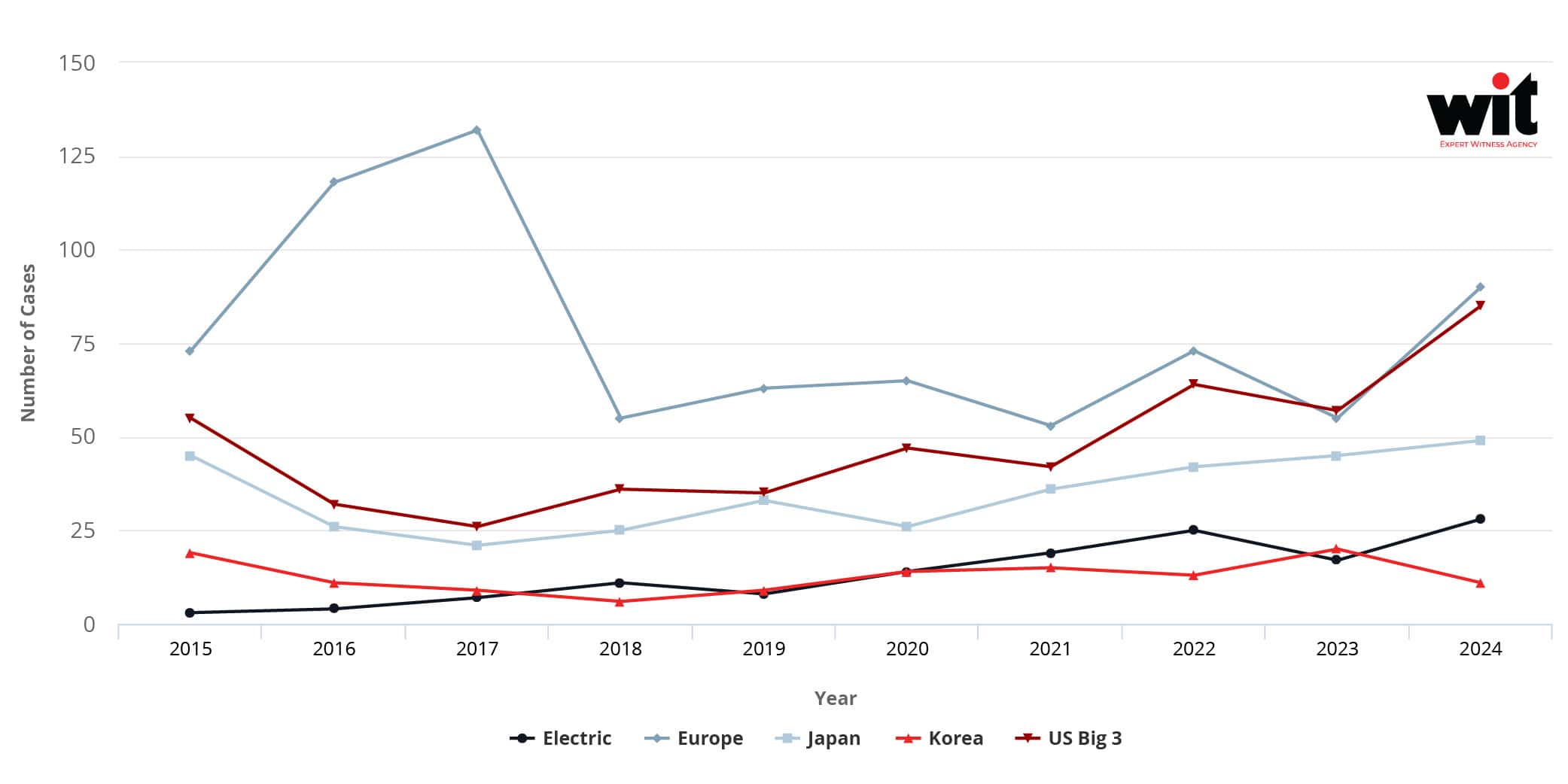
| Change Rate YoY | |||||
| Year | Electric | Europe | Japan | Korea | US Big 3 |
| 2016 | 33.33% | 61.64% | -42.22% | -42.11% | -41.82% |
| 2017 | 75.00% | 11.86% | -19.23% | -18.18% | -18.75% |
| 2018 | 57.14% | -58.33% | 19.05% | -33.33% | 38.46% |
| 2019 | -27.27% | 14.55% | 32.00% | 50.00% | -2.78% |
| 2020 | 75.00% | 3.17% | -21.21% | 55.56% | 34.29% |
| 2021 | 35.71% | -18.46% | 38.46% | 7.14% | -10.64% |
| 2022 | 31.58% | 37.74% | 16.67% | -13.33% | 52.38% |
| 2023 | -32.00% | -24.66% | 7.14% | 53.85% | -10.94% |
| 2024 | 64.71% | 63.64% | 8.89% | -45.00% | 49.12% |
How WIT’s Experts Can Help Navigate the Automotive Legal Landscape
WIT represents experts with deep knowledge of automotive engineering, manufacturing, and emerging vehicle technologies to support attorneys in high-stakes litigation. Our expert teams include industry leaders, academics, and former regulators who analyze complex technical issues, assess patent claims, and provide strategic insights. As innovation drives competition and legal challenges, WIT’s experts help clients navigate disputes involving patents, trade secrets, and regulatory matters in the evolving automotive landscape.
Contact us to learn more about WIT’s expert teams in automotive and technology-related disputes.


